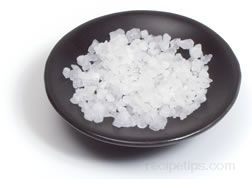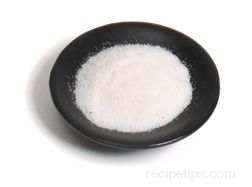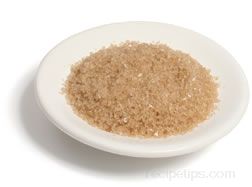Salt can be used for more than simply enhancing the taste of foods, such as tasks which include: 1)a flavoring or seasoning to improve food flavors; 2) a roasting ingredient which seals in juices to keep meats moist or withdraws juices to decrease moisture in foods; 3) a preservative to enable foods to be stored for longer periods of time without spoiling; and 4) as a cleaning agent for foods. It is a good seasoning to use as a rub to be placed inside the cavity of poultry before cooking so that the meat remains moist. Salting vegetables prior to cooking is a process often used to draw out excess moisture that may adversely affect the taste or consistency when the vegetables are being prepared. A salt bath is another use of salt to assist with washing salad greens in order to remove excess dirt and debris.
Salt is available in a variety of types, such as table salt, citric salt, fleur de sel and sel gris, kosher salt, iodized salt, pickling salt, sea salt, seasoned salt, and rock salt. The different types vary in composition, texture or grain (granular, fine grain, crystalline, flaked), and use. When considering the use of salts, several points to consider may include the texture to add crispy or crunchy consistencies to foods, the aroma, the color for presentation purposes, and definitely the flavor which adds to the overall enjoyment of the food taste. It is a common practice to have Kosher salts for use in soups, sauces, stocks, and a variety of liquid based foods. Sea salts are typically used as roasting salts for cooking or finishing salts applied as a topping to foods.













